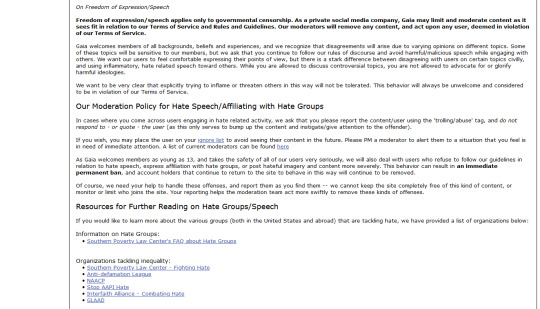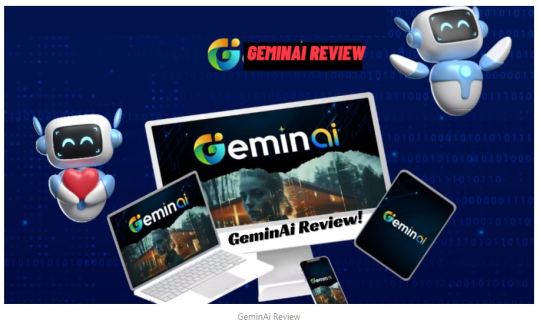#E-commerce In-charge
Text
New Jasmine Hygiene Products Job Vacancy 2079 for Various Positions
New Jasmine Hygiene Products Job Vacancy 2079 for Various Positions, National Sales Manager, Area Sales Manager, E-commerce In-charge, Sales Depo In-charge, Bagmati, Mechi Koshi Sagarmatha, Janakpur Narayani, Lumbini Gandaki Dhaulagiri, Rapti Bheri Karnali, Seti Mahakali will be discussed here with full details.
Jasmine Hygiene Products Job Vacancy 2079 for Various Positions
Jasmine Hygiene…

View On WordPress
#Area Sales Manager#Bagmati#E-commerce In-charge#Janakpur Narayani#Jasmine Hygiene Products Job Vacancy#Kathmandu#Lumbini Gandaki Dhaulagiri#Mechi Koshi Sagarmatha#National Sales Manager#Rapti Bheri Karnali#Sales Depo In-charge#Seti Mahakali
0 notes
Text
How Do You Keep the WordPress Website Stable?
Do You Keep the WordPress Website Stable? WP Bunch is a web design and development company that offers exceptional services like graphic designing, SEO, SMM and other digital marketing services at the best prices. To know more about our web development services. For More information Visit our Blog!

#Website Making Charges#WordPress#Wordpress.com#Affordable Seo Company India#Best Seo Services#Best Seo Strategies#Building a Website#Build Your Own Website#Costs of Building a Website#E-commerce Website
0 notes
Text
With the recent enshittification of a lot of social media, hate speech running rampant and staff not listening to user feedback, it's very refreshing to find a website/online social space that does address these issues and does listen to its userbase.
Never in a million years did I ever expect that website to be Gaia Online, but you know what? I'm glad to see it.





Link to the thread in case you don't want to deal with tumblr's shitty aspect ratio.
For those who quit Gaia a while back due to the site turning into an e-commerce nightmare, things have gotten a lot better! Gary Schofield is long gone, Lanzer's been back in charge since 2017, Ask the Admin is back, they're working on new content for the site, and while it's a long way from how it used to be back in its heyday, the site is steadily beginning to improve.
#text post#long post#gaia online#you know what? maybe 4chan was right. maybe we should go back to gaia. it's actually pretty nice there now.
117 notes
·
View notes
Text
With all the talk of WotC’s new OGL and how they intend to enforce a tighter grip on D&D and the content made for it, I can only hope that more people take this red flag for what it is and make the decision to not support One D&D or any of WotC’s future products. I’d be happy to see more people drop D&D just to deny WotC the prestige of owning the most popular game, but if it just means that you stick to 5e or one of the older editions that you like, that’s still better than giving money to a company that has a very open desire to pursue aggressive monetization and microtransactions.
They’re trying to fabricate a means to legally destroy any and all competition. The people in charge of WotC and its D&D division are ex-Microsoft and ex-Amazon e-commerce specialists. I don’t know what more warning you need that things are likely to get far worse from here. They’re already selling single feats and single monster stat blocks as microtransactions on D&D Beyond. This OGL 1.1 stuff makes it perfectly clear that they do not intend to allow people to sell content anywhere but their platform going forward.
My heart goes out to all the people who spent the last few years painstakingly building their own companies and followings by making better content for D&D than WotC ever did. The amount of work and effort put in by some one-person publishers is unbelievable. They’ve been designing fantastic adventures, classes, items, and far better systems for playing and running 5e for a fraction of the price that you’d pay for an official WotC published splatbook, which would only have a couple pages of actual content and 100-200 pages of fluff and bullshit.
I hope that they can get through this without WotC climbing up their asses, but more importantly, I hope that the followings they’ve built stay with them if they do drop D&D and pursue other systems to write for, or if they start creating their own RPG systems.
259 notes
·
View notes
Text
How Amazon transformed the EU into a planned economy

Amazon is a perfect parable of enshittification, the process by which platforms first offer subsidies to end users until they’re locked in, then make life good for business customers at users’ expense, until they’re locked in, then claw back all the value they can for themselves, leaving just enough behind to keep the lock-in going.
In a new report for SOMO, Margarida Silva describes how the end-stage enshittification of Amazon is playing out in the EU, with Amazon repeating its US playbook of gouging the small businesses who have no choice but to use the platform in order to reach its locked-in customers, making European customers and European sellers poorer:
https://www.somo.nl/amazons-european-chokehold/
The mechanism for this isn’t a mystery. Amazon boasts about it! They call it their flywheel: first, customers are lured into the platform with low prices, especially through Prime, which requires pre-payment for a year’s shipping, which virtually guarantees that customers will start their shopping on Amazon. Because customers now start their buying on Amazon, sellers have to be there. The increased range of goods for sale on Amazon lures in more buyers, who lure in more sellers, with both sides holding each other hostage:
https://vimeo.com/739486256/00a0a7379a
This flywheel creates a vicious cycle, starving local retail so that customers can’t get what they need from brick-and-mortar shops, which funnels sellers into offering their goods for sale on Amazon. The less choice customers and sellers have about where they shop, the more Amazon can abuse both to pad its own bottom line.
There are 800,000 EU-based sellers on Amazon, and they have seen the junk-fees that Amazon charges them skyrocket, to the point where they have to raise prices or lose money on each sale. Amazon uses both tacit and explicit “Most Favored Nation” deals to hide these price-hikes. Under an MFN deal, sellers must not allow their goods to be sold at a lower price than Amazon’s — so when they raise prices to cover Amazon’s increasing fees, they raise them everywhere:
https://pluralistic.net/2023/04/25/greedflation/
It’s not hard to understand why Amazon would raise its fees: the company has an effective e-commerce monopoly. Like Ozymandias, they have run out of worlds to conquer, and so their growth has to come from squeezing suppliers and/or raising prices, not from bringing in new customers. This is likewise true of mobile companies like Apple and Google, who have run out of people who are so excited about incremental mobile hardware gains that they’ll buy a new phone every year, which means that growth has to come from squeezing app vendors:
https://www.tbray.org/ongoing/When/202x/2023/06/09/Pixel-4-to-7
This is likewise true of the streaming companies, which is why Netflix is cracking down on “password sharing”:
https://pluralistic.net/2023/02/02/nonbinary-families/#red-envelopes
It’s true of the movie studios, which is why they want to zero out their wage bills by replacing writers with automatic plausible sentence generators that will write stupid movies that they think we’ll still pay to see because there won’t be anything else:
https://pluralistic.net/2023/05/06/people-are-not-disposable/#union-strong
It’s certainly true of Uber, which is why they’ve double the cost of a taxi ride and halved the wages they pay drivers:
https://pluralistic.net/2023/04/12/algorithmic-wage-discrimination/#fishers-of-men
Monopolies “grow” by making their customers and suppliers worse off. But they have to be careful about this: if it’s obvious that you’re using your market power to screw buyers, you can get in trouble with competition regulators. That’s because the only part of antitrust law that the neoliberal project left intact is “consumer welfare” — the idea that monopolies should only face enforcement when they raise prices and/or lower quality:
https://pluralistic.net/2022/10/10/play-fair/#bedoya
This focus on price-hikes has given monopolists a free hand to squeeze suppliers and workers, because a monopolist — from Walmart to Amazon — can claim that squeezing your workers and suppliers is necessary to enhancing consumer welfare. The less you pay to produce a product, the cheaper you can price it.
When a company has a lot of seller power, we call it a monopolist. When it has a lot of buying power, we call it a monopsonist. No one ever made a bestselling, family-destroying board game called “Monopsony” so most people haven’t heard of the concept. But monopsony is every bit as dangerous as monopoly, and monopsonists find it far easier to acquire market power than monopolists. Few suppliers can afford to have even 10% of their sales disappear overnight, so a buyer who accounts for 10% of your sales can demand deep discounts and other favorable terms.
Amazon is a monopolist, but it’s also a very powerful and ruthless monopsonist. For example, its audiobook division, Audible, has a 90+% market-share, and it used that market-power to steal at least $100m from audiobook creators, in a scandal dubbed Audiblegate:
https://pluralistic.net/2022/09/07/audible-exclusive/#audiblegate
For Europe’s 800k sellers who rely on Amazon to reach their customers, the monoposony conditions are blatant and shameless. Take listing fees: Amazon’s “flywheel” pitch claims that as the company grows, it achieves “economies of scale” that can lower its cost basis. But Amazon’s listing fees haven’t changed, even as the company experienced explosive growth in the EU (remember, sellers whose Amazon fees exceed their margins have to pass those fees onto buyers, and also raise their prices everywhere else to satisfy the Most Favored Nation requirement).
Amazon books the revenues from these fees — and other junk-fees it extracts from sellers — in Luxembourg, an EU member nation that provides a tax haven to multinational businesses that want to maintain the fiction that they operate their businesses out of the tiny kingdom. There is sharp competition in the EU to offer the most servile, corrupt environment for multinationals, and Luxembourg is a leader, along with Cyprus, Malta and, of course, Ireland:
https://pluralistic.net/2023/05/15/finnegans-snooze/#dirty-old-town
But at least listing fees haven’t gone up, unlike other fees, which have climbed sharply. Amazon falsely claimed that its additional revenues from fees were the result of growth by independent sellers, which Amazon pegged at 65%. Later, the company admitted that the true growth figure was 22%. Meanwhile, fees are up 85%.
The true growth figure might be lower still. Amazon refuses to show the math behind its growth figures, or even say which sellers and sales are included in the figure.
The SOMO report cites research by Juozas Kaziukėnas of the e-commerce research firm Marketplace Pulse, who finds that sellers are now giving 50% of their gross revenues to Amazon, an increase of 10% over the past five years across the whole EU. However, different EU (and ex-EU) countries have experienced much steeper increases in fees — in the UK, fees have nearly doubled (up 98%), and in France, fees more than doubled (up 115%).
Many of these increases come from the Fulfilment By Amazon (FBA) program, which is promoted as an optional service, but which is really obligatory — careful research shows that sellers who warehouse, pack and ship their own goods get banished to the depths of search results, even if they have ratings, costs and times that are competitive with FBA. This is especially true of the “buy box” that lands at the top of most searches. The company refuses to disclose how buy box positioning is determined, but 90% of products in the buy box pay for FBA.
Amazon has used excuseflation to hike its FBA prices, blaming higher energy prices for price hikes that predated the Russian invasion of Ukraine, and blaming covid for price hikes that predated the pandemic.
Italy’s competition authority did yeoman service in uncovering the sleaze of FBA, publishing an investigation that showed that Prime and buy box made the notionally “optional” FBA into a must-have for merchants, meaning that Amazon could jack up FBA prices without losing business.
Another notable source of gouging came in response to the UK and France adopting digital services taxes, which were meant to make up for the tax-base erosion enabled by Luxembourg’s flouting of EU tax law. Amazon passed these taxes straight through to its merchants, without seeing a comparable decrease in the number of sellers using its platforms — an unmistakable sign of market power. If you can raise prices without losing customers, then, by definition, your customers have nowhere else to go.
I’ve previously written about how Amazon’s $31b/year “advertising” market isn’t really advertising — rather, it’s a payola scheme that auctions off the top of a search-listing to the merchant with the most to spend:
https://pluralistic.net/2022/11/28/enshittification/#relentless-payola
This is how you get a simple search like “cat beds” returning results whose first screen is 100% ads, and whose next five screens are 50% ads, many of them for dog products:
https://www.washingtonpost.com/technology/interactive/2022/amazon-shopping-ads/
Auctioning off search results means that every time you search for something you want, you have to wade through screen after screen of listings for products whose vendors spent more on advertising, leaving less to spend on making quality goods.
This is as true in the EU as it is in the USA. The SOMO report shows that European merchants are required to spend ever-larger sums to show up in results for the exact products they sell, leaving them with a choice between making less money, raising prices, or skimping on quality.
But even the “winners” of Amazon’s gladiatorial combat among vendors can still lose. Amazon uses an automated product removal process that can delete some or all of a merchant’s products, without warning or explanation, and no one at Amazon will explain what a merchant did wrong. That remains true even if a vendor pays for Amazon’s “marketplace consultant” service — ask these paid Virgils why you’ve been cast into Amazon’s pit, and they’ll shrug their shoulders (and bill you for it).
And even if you can navigate the junk fees, the Kafka-as-a-service removals, the war of all sellers against all sellers for search primacy…you still lose. Merchants told SOMO that a product that survives Amazon’s gauntlet is likely to be cloned by Amazon and sold as an Amazon Basic or other house-brand product. Amazon doesn’t charge itself 50% junk fees, so it can always underprice the vendors it knocks off, and give its own products permanent top-of-search placement.
Amazon founder Jeff Bezos once testified under oath before Congress that this doesn’t happen — and then refused to return to Congress when multiple vendors showed evidence that he’d lied:
https://www.washingtonpost.com/business/2021/10/18/amazon-congress-letter-third-party-data/
He definitely lied:
https://www.reuters.com/investigates/special-report/amazon-india-rigging/
Amazon has faced investigations and enforcement in the EU over this, and settled a claim with a promise to “not use non-public seller data to compete with sellers,” but given the company’s record of broken promises on this score and the difficulty of catching them cheating, it’s pretty naive to think they’ll stick to this.
The report quotes Thomas Höppner, a lawyer who has represented small businesses that Amazon screwed over. Höppner says the problem is that the EU evaluates Amazon’s bad deeds on a “case-by-case” basis, missing the big picture: “By the time one identified problem was seemingly solved, Amazon had long made amendments elsewhere with the same effect. We require a more holistic approach that considers the entire Amazon ecosystem and the various interdependencies within.”
But the EU’s enforcement approach is about to change significantly. The EU just passed the Digital Markets Act (DMA), which imposes a bunch of obligations on Amazon:
allowing sellers to offer their products on other marketplaces at different prices (Article 5.3),
not obliging business users to pay for one of its services in order to use its platform (Article 5.8),
limiting the way Amazon uses non-public seller data to compete with them (Article 6.2)
preventing Amazon from giving top billing in search results to its own products or sellers that have acquired extra Amazon services (Article 6.5)
The report concludes with a suite of recommendations for improving EU enforcement. First, they argue for a return to traditional competition law, abandoning the “consumer welfare standard” that is so friendly to monopsonies and their abuses of suppliers and workers.
They call for a probe into Amazon’s Most Favored Nation deals (“fair pricing policy”), the practice of sponsoring search results, and spiraling fees. They want the EU to adequately fund DMA enforcement, with “measures to prevent regulatory capture.” And they want Amazon to publish clear explanations for how search results, buy box placement, and other practices hidden behind a veil of secrecy.
Amazon will doubtless claim that disclosing how those systems work will make it easier for spammers and scammers to game their way to the top of search results. We should be skeptical of this claim — content moderation is the last domain where anyone takes the bankrupt idea of security through obscurity seriously:
https://doctorow.medium.com/como-is-infosec-307f87004563
Finally, the report calls for breaking up Amazon, forcing it to choose between being a platform seller or a platform user, calling this the only way to “prevent the conflicts of interest between its role as a platform intermediary, seller, and service provider.”
The technical term for this measure is “structural separation” — a rule that bans platform companies from competing with their business customers. This is the principle at work in the US bipartisan AMERICA Act, which would force Google and Meta to spin off the parts of their ad-tech business that put them in a conflict of interest. Right now, Googbook represents both publishers and advertisers, while operating the marketplace where ad sales take place, and they take 51% out of every ad dollar:
https://www.eff.org/deeplinks/2023/05/save-news-we-must-shatter-ad-tech
Structural separation hasn’t really been applied in the US for a generation, but it’s gained currency in recent years, for the obvious reason that the referee can’t also own one of the teams. I was in Germany last week speaking to regulators and politicians, and they espoused skepticism that the EU would embrace structural separation anytime soon.
But they were wrong! Today, the European Commission announced plans to force Google and Meta to sell off their conflict-of-interest ad-tech lines of business, mirroring the provisions of the US AMERICA Act:
https://arstechnica.com/tech-policy/2023/06/google-may-soon-be-ordered-to-break-up-its-lucrative-ad-business-eu-warns/
Structural separation really is the policy we should be demanding. It’s amazing that lawyers who would never argue a case in front of a judge who was married to the plaintiff will turn around and defend the idea that Amazon can fairly operate a marketplace where they compete with other sellers.
With Amazon dominating online sales, and with in-person retail cratering, Amazon’s decisions have the power to determine the outcome of whole swathes of Europe’s economy. This is the “planned economy” that the EU claims it detests and seeks to prevent — but it’s an economy planned by distant autocrats in a Seattle boardroom, for the purpose of extracting the surpluses needed to launch an endless procession of penis-rockets.

If you’d like an essay-formatted version of this postto read or share, here’s a link to it on pluralistic.net, my surveillance-free, ad-free, tracker-free blog:
https://pluralistic.net/2023/06/14/flywheel-shyster-and-flywheel/#unfulfilled-by-amazon

[Image ID: A desert ruin. In the foreground is a huge Amazon box, with an EU flag in place of its shipping label. Atop the box are the feet and partial legs of an Oxymandias figure.]

Image:
Rama (modified)
https://commons.wikimedia.org/wiki/File:Gladiator_with_sword-Louis_Ernest_Meissonnier-MG_1216-IMG_1223-white.jpg
CC BY-SA 3.0
https://creativecommons.org/licenses/by-sa/3.0/fr/deed.en
#pluralistic#payola#digital markets act#dma#Centre for Research on Multinational Corporations#planned economies#kafka-tech#fba#Luxembourg#amazon#enshittification#monopsony#chokepoint capitalism#Margarida Silva#flywheel#eu#fulfillment by amazon#junk fees#ad-tech#somo
122 notes
·
View notes
Text
Credit Card Acceptance in E-Commerce: A Merchant Account Perspective
Article by Jonathan Bomser | CEO | Accept-Credit-Cards-Now.com

In the ever-evolving landscape of e-commerce, the seamless acceptance of credit card payments stands as a linchpin, capable of dictating the triumph or downfall of businesses. From seasoned online retailers to burgeoning startups, adopting a strategic perspective on the E-Commerce Merchant Account becomes paramount in orchestrating a flawless payment process. This comprehensive guide meticulously navigates the labyrinth of credit card acceptance in e-commerce, providing insights from a merchant account standpoint and unraveling diverse facets crucial for success in the realm of online businesses.
DOWNLOAD THE CREDIT CARD ACCEPTANCE INFOGRAPHIC HERE
Pillars of Seamless Transactions: Unveiling Payment Processing Solutions
Efficient payment processing lays the foundation for successful e-commerce transactions. In the brisk domain of online exchanges, customers demand a payment experience seamlessly blending speed and security. An E-Commerce Merchant Account equips your business with the essential tools to process payments swiftly and securely, ensuring customer satisfaction and fostering unwavering trust.
Navigating the Waters of Risk: Tailored Credit Card Processing Solutions
E-commerce operations, especially in industries like CBD or credit repair, often find themselves labeled as high-risk. However, this classification need not be a deterrent. Tailored high-risk credit card processing solutions, meticulously designed for e-commerce, empower businesses to adeptly navigate challenges. These specialized solutions are crafted to mitigate the unique risks associated with high-risk enterprises.
The Vital Role of the Credit Repair Payment Gateway
For entities engaged in credit repair services, the importance of a well-suited payment gateway cannot be overstated. A credit repair payment gateway acts as the secure conduit for accepting payments while adhering to industry regulations. It functions as the bridge fostering trust and compliance, an indispensable element within the credit repair sector.
CBD Merchant Processing: A Strategic Approach to Overcoming Challenges
The explosive growth in the CBD industry is accompanied by distinctive challenges, particularly in payment processing. CBD merchant processing can be intricate due to regulatory nuances. Nevertheless, an E-Commerce Merchant Account fortified with expertise in high-risk processing emerges as a strategic ally, assisting businesses in overcoming hurdles and unlocking the expansive potential of this lucrative market.
Gateway to Online Triumph: Feature-Rich Payment Gateway Solutions
In the e-commerce arena, a versatile and efficient payment gateway emerges as the pivotal key to triumph. More than a mere tool, it acts as the gateway to customer satisfaction. A robust online credit card processing solution ensures that customers can execute payments seamlessly, propelling higher conversion rates and fostering repeat business.
youtube
Advantageous Stride in Credit Repair Merchant Processing
Credit repair businesses hinge on the pillars of trust and efficiency. Opting for the right credit repair merchant processing solution within the E-Commerce Merchant Account not only streamlines transactions but elevates the business's standing. Providing secure and convenient credit card payment services becomes a distinguishing factor in this fiercely competitive industry.
In the ever-evolving landscape of e-commerce, the optimization of your E-Commerce Merchant Account stands as an imperative pursuit. Whether your business falls under the high-risk category, operates as a CBD retailer, or specializes in credit repair services, the capability to seamlessly accept credit card payments is non-negotiable. It transcends the mere act of keeping pace with contemporary norms; it signifies leading the charge. From streamlined payment processing and specialized high-risk credit card processing to domain-specific solutions like the credit repair payment gateway and CBD merchant processing, your E-Commerce Merchant Account serves as the linchpin of your online prosperity.
Amidst the fiercely competitive ambiance of e-commerce, where convenience, trust, and security reign supreme, the selection of payment processing solutions becomes the pivotal factor. Armed with the right E-Commerce Merchant Account and a sophisticated payment gateway, your business can optimize the online payment experience, attract a broader customer base, and propel itself to unprecedented heights. Embrace the potency encapsulated within an E-Commerce Merchant Account and forge an alliance with Accept-Credit-Cards-Now Merchant processing services to navigate the expansive terrain of payment processing solutions for your e-commerce enterprise. The future of your online triumph eagerly awaits!
#high risk merchant account#payment processing#credit card processing#high risk payment processing#accept credit cards#high risk payment gateway#merchant processing#credit card payment#payment#youtube#Youtube
19 notes
·
View notes
Text
Workers in Sweden Will Expand Strike Against Tesla
Swedish unions are joining in blockades and targeted strikes against the U.S. automaker over its refusal to sign a collective bargaining agreement with its mechanics.
By Melissa Eddy and Christina Anderson
Unions across Sweden said on Tuesday that they would support an effort to pressure Tesla to sign a collective bargaining agreement with its 120 mechanics, joining a campaign to defend a model of organized labor that many Swedes say is essential to the country’s economic success and stability.
Dockworkers said they would expand their blockade of the automaker’s shipment to all ports in Sweden next week, after launching the action at four key locations. The electricians’ union said its members would stop servicing Tesla charging stations when they needed a repair, and maintenance workers said they wouldn’t clean Tesla facilities.
On Monday, the IF Metall trade union, which represents 300,000 workers across the country including the Tesla mechanics, said its talks with company representatives had ended without resolution. The union began the strike action at Tesla’s 12 service centers on Oct. 27.
Tesla, which entered Sweden in 2013, did not respond to requests for comment. The company told Sweden’s TT News Agency that it followed Swedish labor market rules but had chosen not to sign a collective agreement.
“It is unfortunate that IF Metall has taken these measures,” Tesla told TT in an emailed statement. “We already offer equivalent or better agreements than those covered by collective bargaining and find no reason to sign any other agreement.”
Tesla also said it was committed to “remaining available to our customers” during the strike.
That appeared to be the case on Tuesday at a Tesla facility in Segeltorp, a suburb of Stockholm, where customers were dropping off and picking up their cars and mechanics were seen coming and going. They declined to speak with a reporter.
IF Metall has said it believes that Tesla has hired outside workers to replace striking employees, but this could not be independently confirmed. “We know that Tesla has people who are not part of the ordinary work force working in some locations,” said Jesper Pettersson, the union’s spokesman.
Some Tesla owners arriving to have their cars serviced appeared to be nonplused by the labor actions.
“It should be up to the company” whether it signs a collective bargaining agreement, said Karin Bjarle, 42, an e-commerce entrepreneur who had the bulbs in her headlight replaced.
The unions supporting IF Metall’s cause said they were trying not only to improve working conditions for mechanics employed by Tesla but to defend Sweden’s longstanding system of organized labor, in which employers and employees work together to reach consensus on wages, benefits and working hours. Such agreements cover about 90 percent of workers in Sweden.
“If we let this go, it puts a crack in the whole system,” said Tommy Wreeth, head of the Swedish Transport Workers’ Union, who went to Sodertalje Harbor, south of Stockholm, to rally union members around the blockade against Tesla.
“This isn’t just about the metalworkers’ and transport workers’ unions,” he said. “This is important because the whole Swedish model is at stake.”
The transport union said last week that it would refuse to unload any Teslas arriving by ship to four large Swedish ports beginning Tuesday. After it learned that Tesla was rerouting shipments to other ports, the union said, it expanded its job action to block such shipments to all Swedish ports starting Nov. 17 unless an agreement is reached.
On Tuesday it was unclear if any shipments of Teslas were scheduled to arrive or were turned away at the ports. Mans Frostell, chief executive of Sodertalje Port, said Sodertalje received an average of 1,200 cars a week; there were no Tesla cars in this week’s shipment.
Elon Musk, Tesla’s chief executive, has repeatedly pushed back against calls to unionize by his 127,000 employees around the world. But IF Metall and its supporters argue that Tesla’s employees lack the annual wage increases, insurance and pension coverage, and other benefits they would receive if they were under an industrywide collective agreement.
“Tesla must accept the rules of the Swedish labor market, and in Sweden we use collective agreements,” said Mikael Pettersson, head of negotiations at Elektrikerna, the electricians’ union.
Elektrikerna said its members would not provide any servicing or repairs at Tesla’s 213 charging stations across Sweden starting Nov. 17. “If something breaks, no one will fix it,” the union said in a statement.
Cleaning staff at Tesla’s facilities in the Stockholm area and one in Umea in northern Sweden will also start staying home from their jobs on that date, the Swedish Building Maintenance Workers’ Union said.
Not only unions are joining in the action. Taxi Stockholm, which advertises its adherence to the collective agreement system, said it would cease all new orders of Teslas for its fleet.
“It’s good they’re taking these actions,” said Jesper Nordgaard, 29, a member of the transport union who works at the port of Sodertalje. “My question is why didn’t they do it sooner?”
Melissa Eddy is a correspondent based in Berlin who covers German politics, social issues and culture. She came to Germany as a Fulbright scholar in 1996, and previously worked for The Associated Press in Frankfurt, Vienna and the Balkans. More about Melissa Eddy
38 notes
·
View notes
Text
Cincinnati’s Clean-Up Campaigns Remind Us That Our Ancestors Lived Like Pigs

If you had family in Cincinnati a century ago, I have bad news for you: They wallowed in garbage. It wasn’t entirely Grandma’s and Grandpa’s fault. The City of Cincinnati took a long time to figure out trash collection. Back around 1910, for example, the city sanitation wagons picked up only two kinds of refuse – ashes and garbage. Ashes were the remnants of the fuel burned in stoves and furnaces. Garbage had a very specific definition, as set forth in the 1909 Building Code:
“The word ‘garbage’ shall be held to include all refuse of animal, fish or vegetable matter which has been used for food for man, and all refuse animal, fish or vegetable matter which was intended to be so used.”
The average household also accumulated stacks of paper and piles of rags – no paper towels back then! – and the Rag Man hauled this stuff away for sale to the local paper mills.
That left several miscellaneous categories of rubbish or trash that no one had any interest in: broken bottles and crockery, old wooden barrels, scrap lumber, anything metallic like tin cans or buttons, bricks and stones, tree branches, and so on. All of this junk just piled up in the backyard or basement or both.
In the early 1900s, a few progressive organizations tried to organize city-wide clean-up campaigns to eliminate all the junk from residential backyards. In addition to aesthetic concerns, there was a strong financial incentive for hauling away this trash. Cincinnati’s fire-insurance underwriters applauded [Cincinnati Enquirer 5 January 1906] a report demonstrating that a 1905 clean-up effort had resulted in 200 fewer fires than were recorded in the previous year. Insurers actually lowered rates for the downtown businesses after clean-up campaigns and Captain Jack Conway of the Cincinnati Salvage Corps requested regular campaigns to remove trash:
“He advocates the ‘clean up’ campaign be continued with unabated vigor until all rubbish is removed from cellars, old waste from under benches, &c., which are the most prolific source of fires.”

The Cincinnati Woman’s Club led the charge in 1907 and talked Mayor Edward J. Dempsey into supporting a thorough spring cleaning for the downtown area. The mayor asked residents to haul all that backyard and basement debris out to the curb on one fine day in June. Problem was, all of the city’s street-cleaning wagons were already committed to hauling ashes and garbage that day. It was only when Mayor Dempsey talked the very reluctant Street Repair Department into donating their 40 wagons that the campaign was made possible. Even a fleet that large was not enough to handle the accumulated detritus. According to the Cincinnati Post [10 June 1907]:
“As the Cincinnati Street-cleaning Department has not enough teams and men to clean up all that district in one day, the Woman’s Club, for which the city is making the experiment, has appealed to all firms and corporations and all individuals having wagons and teams to assist in the work Wednesday, June 12. That is the day upon which all the hauling will be done.”
Annual “house cleaning days” gathered enough support to continue for several years, but the Woman’s Club had other initiatives to support and leadership for the campaign transferred to the Chamber of Commerce, which super-sized the operation. For the 1914 campaign, the Chamber set aside several weeks in the spring for the clean-up, followed by a city-wide inspection. The Chamber paid for 100,000 lapel buttons promoting the effort and printed 250,000 circulars informing residents how to participate.
The Chamber even coughed up a $25 prize for the best “Clean Up and Paint Up” song. The winning lyrics were composed by Dr. Stephen E. Slocum, professor of applied mathematics at the University of Cincinnati, whose words were set to music by Walter H. Aiken, director of music for the Cincinnati Public Schools. The local schools stepped up to promote the clean-up campaign, not only by distributing brochures and flyers, but by planting gardens in most of the city’s schoolyards.

In addition to aesthetics and fire safety, the 1914 campaign encouraged sanitary measures to stop the spread of flies. At a time when the majority of vehicles on Cincinnati’s roads were horse-drawn, manure piled up all through the city, supporting an infestation of flies unimaginable today.
After weeks of encouraging residents to tidy up their properties, the Chamber coordinated a city-wide inspection to document compliance and results. According to the annual report, some citizens were none to happy about having their domestic habits evaluated:
“There were some people with a misconception of the meaning of personal liberty who refused to allow inspection of their premises and some preferred not to aid in a general ‘clean up’ for fear it would be only spasmodic and not result in permanent good.”
Despite scattered opposition, the Chamber bragged that the 1914 campaign resulted in a $600,000 reduction in fire loss, from $1.3 million in 1913 to less than $800,000 in 1914. Nearly 8,000 wagonloads of trash were hauled out of residential areas. That success led to an even more ambitious campaign plan for 1915. In fact, the Chamber may have become a victim of its own success. A report suggests that few of the campaign’s ambitious goals were achieved in 1915, although the results were still impressive.
At the conclusion of the 1915 clean-up period, the Chamber coordinated city-wide inspections. More than 42,000 premises received a visit, with 30,000 earning a clean certification. The remaining 12,000 properties appalled the inspectors, who identified nearly 35,000 defects ranging from unsecured garbage and ash cans to obstructed fire escapes to overflowing privy vaults and unsanitary toilets to open manure piles.
More than 300 buildings were found in such deplorable condition that they were ordered razed. The city located nearly 1,300 illegally maintained backyard outhouses and ordered them replaced with flush toilets that could still be located in the backyard if preferred!
Thanks to the generosity of the Mabley & Carew Company, clean-up participants planted more than 84,000 trees on Cincinnati’s barren hillsides.
While congratulating itself on a job well done, the Chamber dinged the city administration for outdated and ineffective procedures for removing garbage and other refuse:
“The city has made no step forward for the disposal of its waste, except garbage, since its first log cabin was built in January 1789. As the population has increased, the dumps have grown in size and become nearer to built up residence sections. This has resulted in strenuous complaints from time to time, and the elimination of those dumps against which pressure has become too strong to be resisted by city officials.”
Alas, with the city administration still under the thumb of the Boss Cox machine, city officials could resist any level of public pressure without even breaking a sweat.

10 notes
·
View notes
Text

Bill Bramhall, New York Daily News
* * * *
LETTERS FROM AN AMERICAN
March 5, 2024 (Tuesday)
HEATHER COX RICHARDSON
MAR 6, 2024
Possibly the biggest story today in terms of its impact on most Americans’ lives is that as part of its war on junk fees, the Biden administration announced an $8 cap on late fees charged by credit card issuers that have more than a million accounts. These companies hold more than 95% of outstanding credit card debt. Currently, fees average $32, and they fall on more than 45 million people. The White House estimates that late fees currently cost Americans about $25 billion a year. The rule change will save Americans about $10 billion a year.
The administration also announced a “strike force” to crack down on “unfair and illegal pricing.” Certain corporations raised prices as strained supply chains made it more expensive to make their products. But after supply chains were fixed and their costs dropped, corporations kept consumer prices high and passed on record profits to their shareholders. The strike force will encourage federal agencies to share information to enable them to identify businesses that are breaking the law.
Banking organizations and the U.S. Chamber of Commerce came out swinging. Executive vice president Neil Bradley said that such regulation “to micromanage how private businesses set prices will have the same result: shortages, fewer choices for consumers, a weaker economy, and less jobs.”
And in what perhaps illustrates why voters don’t appear to know much about what the administration is doing, these stories have gotten far less attention today than the primaries and caucuses.
Today is Super Tuesday, when 15 states and one territory choose their primary candidates for president and for the House of Representatives and the Senate (although in Alaska, only Republicans vote today and in American Samoa, only Democrats vote today). About 36% of Republican delegates will be awarded today, and that’s the side people will be watching because on the Democratic side, Biden has a virtually uncontested lead with the exception of candidate Jason Palmer, who won the Democratic caucuses in American Samoa.
Trump is expected to win today’s Republican contests, but observers are watching to see what percentage of the vote challenger Nikki Haley, former governor of South Carolina, takes from him. As I write this, she appears to have won Vermont and run strongly elsewhere, especially in the suburbs. Three states conducted exit polls and they, too, show warning signs for Trump as 78% of Haley voters in the North Carolina primary, 69% in California, and 68% in Virginia refused to say they would support the party’s nominee no matter who it is.
It is also notable that polls showed Trump with a much stronger margin over Haley than materialized today. As Josh Marshall of Talking Points Memo notes, it is not yet clear what that means.
Trump is on his way to becoming the Republican presidential nominee. On Friday the Republican National Committee (RNC) will meet in Houston to choose a new chair. The only people running are Trump loyalist Michael Whatley and Trump’s daughter-in-law Lara Trump, who hope to become co-chairs. Natalie Allison reported today in Politico that the RNC will not vote on a resolution that would have prohibited the RNC from covering Trump’s legal bills.
Trump is certainly in need of money. Today, his lawyers demanded a new trial in the second E. Jean Carroll case, complaining that the judge limited what he could say, and asked for a judgment figure significantly lower than the $83.3 million the jurors awarded. By the end of Friday, Trump must post either the money or a bond covering it.
This morning, Trump told Brian Kilmeade of Fox & Friends that he was not worried about coming up with the money to pay the $454 million he owes in the New York fraud case, or the interest it is accruing at more than $100,000 a day. “I have a lot of money. I can do what I want to do,” Trump said. “I don't worry about anything. I don't worry about the money. I don't worry about money.”
Yesterday, Allen Weisselberg, the former chief financial officer of the Trump Organization, admitted he lied under oath during his testimony in that case. He will be sentenced in April.
Super Tuesday is also the day that the 2024 presidential campaign begins in earnest for those who had not previously been paying much attention, and Taylor Swift today urged her 282 million followers on Instagram “to vote the people who most represent YOU into power. If you haven't already, make a plan to vote today,” she wrote.
The presidential contest is only one of the many contests on the ballot today, but most of those results are not yet in.
Although the Arizona primary will not be held until March 19, we did learn today that Senator Kyrsten Sinema (I-AZ) will not run for reelection. Her exit will leave the Arizona senator’s race to election-denying Trump Republican Kari Lake, who lost the Arizona governorship in 2022 (although she continues to insist she won it), and Arizona Democratic representative Ruben Gallego.
Just as voters don’t appear to know much about what the administration has done to make their lives better, a recent study from a Democratic pollster suggests that voters don’t seem to know much about Trump’s statements attacking democracy. When informed of them, their opinion of Trump falls.
Trump has called for mass deportations of immigrants and foreign-born U.S. citizens; on February 29, he said he would use local police as well as federal troops to round people up and move them to camps for deportation. Asked yesterday by a Newsmax host if he would “order mass deportations if you win the White House,” Trump answered: “Oh, day one. We have no choice. And we’ll start with the bad ones. And you know who knows who they are? Local police. Local police have to be given back their authority, and they have to be given back their respect and immunity.”
On the one hand, caps to credit card late fees and an attempt to address price gouging; on the other hand, local police with immunity rounding up millions of people and putting them in camps, for deportation. And, in between the two, an election.
People had better start paying attention.
LETTERS FROM AN AMERICAN
HEATHER COX RICHARDSON
#Heather Cox Richardson#Letters From An American#deportations#TFG#election 2024#economy#Bill Bramhall
8 notes
·
View notes
Text
How to make money online?
Making money online involves various methods, depending on your skills, interests, and resources. Here are some popular ways to make money online:
Freelancing: Offer your skills and services on freelance platforms like Upwork, Freelancer, or Fiverr. Common freelance jobs include writing, graphic design, programming, digital marketing, and virtual assistance.
Online Tutoring or Coaching: If you have expertise in a particular subject or skill, you can offer tutoring or coaching services through platforms like Tutor.com, Chegg Tutors, or Skillshare.
E-commerce: Start an online store to sell products. You can create your own e-commerce website using platforms like Shopify or sell on established marketplaces like Amazon, eBay, or Etsy.
Affiliate Marketing: Promote products or services and earn a commission for each sale made through your referral link. Join affiliate programs of companies in your niche or use affiliate networks like Amazon Associates, ClickBank, or ShareASale.
Content Creation: Monetize your content by creating a blog, YouTube channel, podcast, or social media presence. You can earn money through advertising, sponsorships, affiliate marketing, or selling digital products.
Online Surveys and Market Research: Participate in online surveys, focus groups, or market research studies to earn rewards or cash. Websites like Swagbucks, Survey Junkie, and UserTesting offer opportunities for paid surveys and testing products.
Dropshipping: Start a dropshipping business where you sell products to customers without holding inventory. When a customer makes a purchase, you purchase the product from a third party who then ships it directly to the customer.
Stock Photography: If you have photography skills, you can sell your photos online to stock photography websites like Shutterstock, Adobe Stock, or Getty Images.
Virtual Events and Webinars: Host virtual events, workshops, or webinars on topics you're knowledgeable about and charge attendees for access.
Online Courses and Digital Products: Create and sell online courses, eBooks, templates, or digital downloads on platforms like Udemy, Teachable, or Gumroad.
Remember that success in making money online often requires patience, persistence, and continuous learning. It's essential to choose methods that align with your skills and interests and to be wary of scams or get-rich-quick schemes promising unrealistic returns.
#etsy#how to sell on etsy#make money online#how to make money online#passiveincome#money#online#mony online#make money
6 notes
·
View notes
Text
Incredible High-paying Career Paths for Web Designers

In today's digital age, web design has become an exciting and changing field with many options. There's a big demand for web designers who can make websites that look good and are easy to use. If you recently finished learning web design, great job! You're starting an exciting journey. In this blog post, we'll talk about all the different jobs you can do after learning web design.
Web Designer:
Make websites that look good and are easy to use.
Work with clients to understand what they want their website to look like.
Design how the website will look, including picking colors and fonts.
Create pictures and graphics to make the website look nice.
Use computer programs like Adobe Photoshop, Sketch, or Figma to design things.
Learn about the latest design trends to make modern and good-looking websites.
Front-End Developer:
Turn web design ideas into working websites using code like HTML, CSS, and JavaScript.
Make sure websites work well on different devices and screens.
Add fun things like buttons that change when you click them.
Work with web designers to make their ideas real.
Find and fix problems with how websites look and work.
Keep up-to-date with new tools and ways to build websites.
UI/UX Designer:
Focus on making websites and apps that are easy for people to understand and use.
Talk to users and test websites to learn how to make them better.
Draw pictures and models of websites before they're built to see how they'll work.
Work closely with people who make websites to make sure they look like the designs.
Think about who will use the website and how they will use it.
Try to make sure websites are easy to use and look nice for everyone.

Graphic Designer:
Make pictures and designs for things like logos, posters, and ads.
Use computer programs like Adobe Illustrator and InDesign to create pictures.
Work with marketing teams to show what a brand wants to say with pictures.
Understand things like colors, fonts, and how things should look on a page.
Keep a collection of your best design work to show to others.
Change designs to look good both on computers and when they're printed.
E-commerce Specialist:
Make and make better websites where people can buy things online.
Make sure it's easy for people to find and buy things on the website.
Make sure it's safe for people to pay for things online.
Use tools like Shopify, WooCommerce, or Magento to help make online stores.
Look at how people use the website to sell more things.
Keep up with what's new in online shopping.
Digital Marketer:
Make things like pictures and ads that look good and get people's attention online.
Make things for social media, emails, and online ads.
Work with other people in marketing to make sure the pictures match what they want to say.
Use tools to see how the things you make do online and make choices based on what you learn.
Make sure the pictures look good on different places online and on phones and computers.
Learn about new ways to do marketing online.
CMS Specialist:
Change and keep up websites that use special programs, like WordPress or Joomla.
Change how websites look and work to match what the owner wants.
Make sure websites are safe and work well.
Teach people how to use the special program to make websites.
Fix problems with the special program.
Learn about the updates and extras for the special program.
Freelancer:
Work for yourself and make websites for people.
Choose when you work and how much you charge.
Make a lot of different kinds of websites for different people.
Tell people about your work online and meet other people in the same job.
Do everything for your work, like talking to people, making websites, and getting paid.
Keep getting better at your work and get more people to hire you.
Web Design Educator/Trainer:
Teach other people how to make websites.
Make plans and materials to help people learn how to design.
Teach classes and workshops, or teach people on the internet.
Help people learn and give them feedback.
Keep up with new ways to teach and new things in web design.
Encourage and help new designers learn.
Entrepreneur:
Start your own company that makes websites.
Build a team of people who design, build, and manage websites.
Talk to people who want websites and make a plan for how to make them.
Make a brand and a way to tell people about your company.
Do different kinds of websites for big and small companies.
Try to be creative and make the best websites.
User Testing and Research:
Be an expert in seeing if websites are easy to use.
Ask people and look at how they use websites to see if they're good or need to be better.
Make reports and ideas for making websites easier to use.
Work with designers and builders to make websites better.
Tell people why it's important to make websites that anyone can use.
Teach people how to make websites that work for everyone.
Mobile App Designer:
Design how apps on phones and tablets look and work.
Make sure app designs work well when you touch the screen.
Work with people who make apps to make sure the designs work.
Keep up with how to design apps for different kinds of phones.
Think about how people use apps and make them easy to use.
Test and change app designs based on what people say.
Art Director:
Be the boss of art and design projects and tell the team what to do.
Watch over how ads, campaigns, or design projects look.
Lead a team of designers and give them advice.
Talk to people who want art and design work to understand what they want.
Make sure designs match what a brand is saying and how it looks.
Keep high standards for how designs look and how creative they are.
Web Accessibility Specialist:
Be an expert in making websites work for people with disabilities.
Follow rules for making websites easy to use for everyone, like WCAG.
Check if websites are easy to use for people with disabilities.
Suggest changes to make websites better for everyone.
Work with designers and builders to make websites more accessible.
Tell people why it's important to make websites that everyone can use.
Finishing web design is like getting a key to many opportunities. You can make great websites, make things look good, and create your own path online.
But here's the trick: It's not just about making things look nice. It's about making things work and making them helpful. As a web designer, you're a digital magician who combines art and usefulness.
So, as you start in this field, remember that you're not just a web designer; you're a digital creator. Embrace challenges, stay curious, and keep being creative. Your canvas is the internet, and your tools are your skills. Paint your digital future and make it fantastic. If you want to start your web design journey, I recommend ACTE Institution because they offer training, job placement, and certification. Have a great day!
11 notes
·
View notes
Text
GeminAi Review 2024 - World's 1st True Google's Gemini Powered App

GeminAi Review 2024
Introduction :-
Bringing You Instant Answers Across Text, Images, Audio, Video, and Code. This High-tech App Outshines ChatGPT-4 And Making Real-time Multimedia Responses Easy and Faster Within Seconds..!
Say Goodbye to Hefty Monthly Fees with an Advanced AI Alternative to ChatGPT & OpenAI!
Everything You Knew About Your Work, Life, and Work-Life Balance Is About to Change Forever.
What Is GeminAI ?
Geminai is not just another AI; it's a leap into the future of technology.
Built from the ground up, Geminai excels in multimodal reasoning across text, images, video, audio, and code, making it incredibly versatile and powerful.
Imagine an AI model that not only understands your language but also interprets and creates multimedia content based on your input.
With Geminai, you get context-aware, human-like interactions, offering a personalized experience that feels natural and intuitive.
Its image interaction capabilities take multimedia engagement to new heights, seamlessly recognizing and generating visuals that align perfectly with your needs.
Geminai is a pioneer, surpassing the limitations of other AI technologies, making it an accessible gateway to harnessing the full potential of AI for your personal and professional growth.
Unleash Limitless Possibilities with 3 simple Steps :-



It's Features ?
World’s First True Google’s Gemini™ Powered Ai Chat bot.
Unlimited usage without any restriction.
Elevate Content Creation: Transform the way you create digital content, making it more engaging and effective.
Simplify Coding Efforts: Accessible, efficient coding for all skill levels.
Enhance Multimedia Interaction: Advanced Ai for superior image and video conversation with the Ai bot.
Start making money by charging your clients.
No need to pay any monthly fees to any Ai apps again.
100% beginner-friendly, with no coding or technical skills required.
Get a Free Commercial License.
Pay one time and use it forever.
World Class customer support.
Enjoy 24/7 expert support for whatever you need
30 Day Money back guarantee.
Get Results or we will pay you $500 in return for your troubles.

With GeminAI App You can Replace, Various Freelancers or employees.
content writer
proofreader
Editor
Copywriter
Graphic designer
Transcriptionist
Translator
Analysts
Revolutionize Your Business with GeminAi App
Unleashing Cutting-Edge Technology to Skyrocket Your Success Instantly – Experience the Future Now!
GeminAi Can Interact With Multi Format: (Images & Videos Too)
AI Content Creation:
Advanced NLP Technology Processing
Cost-Efficient Transcription
Simple 3-Step Process
Multilingual Content Generation
100% Cloud-Based Convenience
Efficient Team Management
Limitless Templates
No Monthly Fees


youtube
What You Can Do With The GeminAI App!!!
Create a Content Agency
Develop Cutting-Edge Apps
Build and Sell Chatbots
Write A-List Copy
AI-Driven Graphic Design
Video Production and Marketing
E-Commerce Optimization
Automated SEO and Content Marketing
Data Analysis and Reporting
Personal Branding and Influencer Marketing
Struggle that you have to facing....
Trapped in Unfulfilling Work
Struggle for Work-Life Balance
Financial Constraints and Uncertainty
Overwhelmed by Technological Advancements
Desire for Meaningful Work
Need to pay Hefty monthly charges for expensive Ai Apps.
Burden of paying expensive copywriters.
Struggle with time-consuming manual copywriting.
Face challenges in maintaining consistency in writing quality.
Encounter difficulties in generating creative and impactful content.
Invest significant time and effort in refining and editing text.
Experience limitations in adapting to diverse writing styles and tones.
Reason For that You have to Go With GeminAI App....
No need to pay any monthly fee for lifetime.
Replace all the copywriters with GeminAi.
Generate compelling and engaging copy effortlessly.
Enjoy a time-efficient content creation process.
Experience a boost in productivity with AI-generated text.
Achieve consistent and high-quality writing across various projects.
Seamlessly adapt to changing writing styles and tones.
In Order To Make This Even More Profitable And Easier For You,Here Are Some Big Bonuses:






Frequently asked Question:
Q: Will I get Support for this software?
A: Yes, our 24*7 support team is always available to solve your issues and help you get the best results from GeminAi.
Q: Are there any monthly fees?
A: No, currently we are offering a one-time price for this tool. So, get this best deal before reversing to a Monthly subscription.
Q: Is there any money-back guarantee?
A: Yes, we are offering 30 days money-back guarantee. So there is no risk when you act now. The only way you lose is by taking no action.
Q: Do you update your product and improve it?
A: Yes, we always maintain our product and improve with new features.
Q: How to Activate my Early Bird discount?
A: Click the below button to grab this at an early bird discount.

Here's A Recap Of EverythingYou're Getting Instant Access To!HURRY! Price Rises Again In...

GeminAi can Interact with Multi Format = $9990
Create Unlimited Ai content & visuals in minutes = $1590
High-Quality Training Included for making three Figures a day = $490
Free Commercial Rights = $1990
Done For you Template to Build App Instantly = $290
End to end SSL encryption to safeguard your Data & 24*7 malware protection = $490
24*7 Customer Support = Priceless
Double Your Money Back Guarantee = Priceless
Fast Action Bonus #1: Ai Profit Masterclass (Value:$197)
Fast Action Bonus #2: Ai Image Library (Value:$297)
Fast Action Bonus #3: TikTok Ad Mastery (Value:$147)
Fast Action Bonus #4: StockHub (Value:$147)
Fast Action Bonus #5: Ai Youtube Masterclass (Value:$197)
Fast Action Bonus #6: Ai for Productivity (Value:$197)
Total Value Of Everything YOU GET TODAY: $14,840
For Limited Time Only Grab It Now For
$297 Monthly
Today, Only 1-Time - $14.95
Buy GeminAI Now
#artificial intelligence#copywriting#freelance#ecommerce#branding#entrepreneur#founder#marketing#data analytics#content creator#social media#proofreading#editing#ai generated#chatgpt#technology#google#google bard#copywriter#graphic designer#translator#review#ai chat bot#gemini ai#google gemini app#ai revolution#traffic#geminai#digital marketing#ai tools
5 notes
·
View notes
Text
The antitrust Twilight Zone

Funeral homes were once dominated by local, family owned businesses. Today, odds are, your neighborhood funeral home is owned by Service Corporation International, which has bought hundreds of funeral homes (keeping the proprietor’s name over the door), jacking up prices and reaping vast profits.
Funeral homes are now one of America’s most predatory, vicious industries, and SCI uses the profits it gouges out of bereaved, reeling families to fuel more acquisitions — 121 more in 2021. SCI gets some economies of scale out of this consolidation, but that’s passed onto shareholders, not consumers. SCI charges 42% more than independent funeral homes.
https://pluralistic.net/2022/09/09/high-cost-of-dying/#memento-mori
SCI boasts about its pricing power to its investors, how it exploits people’s unwillingness to venture far from home to buy funeral services. If you buy all the funeral homes in a neighborhood, you have near-total control over the market. Despite these obvious problems, none of SCI’s acquisitions face any merger scrutiny, thanks to loopholes in antitrust law.
These loopholes have allowed the entire US productive economy to undergo mass consolidation, flying under regulatory radar. This affects industries as diverse as “hospital beds, magic mushrooms, youth addiction treatment centers, mobile home parks, nursing homes, physicians’ practices, local newspapers, or e-commerce sellers,” but it’s at its worst when it comes to services associated with trauma, where you don’t shop around.
Think of how Envision, a healthcare rollup, used the capital reserves of KKR, its private equity owner, to buy emergency rooms and ambulance services, elevating surprise billing to a grotesque art form. Their depravity knows no bounds: an unconscious, intubated woman with covid was needlessly flown 20 miles to another hospital, generating a $52k bill.
https://pluralistic.net/2022/03/14/unhealthy-finances/#steins-law
This is “the health equivalent of a carjacking,” and rollups spread surprise billing beyond emergency rooms to
anesthesiologists, radiologists, family practice, dermatology and others. In the late 80s, 70% of MDs owned their practices. Today, 70% of docs work for a hospital or corporation.
How the actual fuck did this happen? Rollups take place in “antitrust’s Twilight Zone,” where a perfect storm of regulatory blindspots, demographic factors, macroeconomics, and remorseless cheating by the ultra-wealthy has laid waste to the American economy, torching much of the US’s productive capacity in an orgy of predatory, extractive, enshittifying mergers.
The processes that underpin this transformation aren’t actually very complicated, but they are closely interwoven and can be hard to wrap your head around. “The Roll-Up Economy: The Business of Consolidating Industries with Serial Acquisitions,” a new paper from The American Economic Liberties Project by Denise Hearn, Krista Brown, Taylor Sekhon and Erik Peinert does a superb job of breaking it down:
http://www.economicliberties.us/wp-content/uploads/2022/12/Serial-Acquisitions-Working-Paper-R4-2.pdf
The most obvious problem here is with the MergerScrutiny process, which is when competition regulators must be notified of proposed mergers and must give their approval before they can proceed. Under the Hart-Scott-Rodino Act (HSR) merger scrutiny kicks in for mergers when the purchase price is $101m or more. A company that builds up a monopoly by acquiring hundreds of small businesses need never face merger scrutiny.
The high merger scrutiny threshold means that only a very few mergers are regulated: in 2021, out of 21,994 mergers, only 4,130 (<20%) were reported to the FTC. 2020 saw 16,723 mergers, with only 1.637 (>10%) being reported to the FTC.
Serial acquirers claim that the massive profits they extract by buying up and merging hundreds of businesses are the result of “efficiency” but a closer look at their marketplace conduct shows that most of those profits come from market power. Where efficiences are realized, they benefit shareholders, and are not shared with customers, who face higher prices as competition dwindles.
The serial acquisition bonanza is bad news for supply chains, wages, the small business ecosystem, inequality, and competition itself. Wherever we find concentrated industires, we find these under-the-radar rollups: out of 616 Big Tech acquisitions from 2010 to 2019, 94 (15%) of them came in for merger scrutiny.
The report’s authors quote FTC Commissioner Rebecca Slaughter: “I think of serial acquisitions as a Pac-Man strategy. Each individual merger viewed independently may not seem to have significant impact. But the collective impact of hundreds of smaller acquisitions, can lead to a monopolistic behavior.”
It’s not just the FTC that recognizes the risks from rollups. Jonathan Kanter, the DoJ’s top antitrust enforcer has raised alarms about private equity strategies that are “designed to hollow out or roll-up an industry and essentially cash out. That business model is often very much at odds with the law and very much at odds with the competition we’re trying to protect.”
The DoJ’s interest is important. As with so many antitrust failures, the problem isn’t in the law, but in its enforcement. Section 7 of the Clayton Act prohibits serial acquisitions under its “incipient monopolization” standard. Acquisitions are banned “where the effect of such acquisition may be to substantially lessen competition between the corporation whose stock is so acquired and the corporation making the acquisition.” This incipiency standard was strengthened by the 1950 Celler-Kefauver Amendment.
The lawmakers who passed both acts were clear about their legislative intention — to block this kind of stealth monopoly formation. For decades, that’s how the law was enforced. For example, in 1966, the DoJ blocked Von’s from acquiring another grocer because the resulting merger would give Von’s 7.5% of the regional market. While Von’s is cited by pro-monopoly extremists as an example of how the old antitrust system was broken and petty, the DoJ’s logic was impeccable and sorely missed today: they were trying to prevent a rollup of the sort that plagues our modern economy.
As the Supremes wrote in 1963: “A fundamental purpose of [stronger incipiency standards was] to arrest the trend toward concentration, the tendency of monopoly, before the consumer’s alternatives disappeared through merger, and that purpose would be ill-served if the law stayed its hand until 10, or 20, or 30 [more firms were absorbed].”
But even though the incipiency standard remains on the books, its enforcement dwindled away to nothing, starting in the Reagan era, thanks to the Chicago School’s influence. The neoliberal economists of Chicago, led by the Nixonite criminal Robert Bork, counseled that most monopolies were “efficient” and the inefficient ones would self-correct when new businesses challenged them, and demanded a halt to antitrust enforcement.
In 1982, the DoJ’s merger guidelines were gutted, made toothless through the addition of a “safe harbor” rule. So long as a merger stayed below a certain threshold of market concentration, the DoJ promised not to look into it. In 2000, Clinton signed an amendment to the HSR Act that exempted transactions below $50m. In 2010, Obama’s DoJ expanded the safe harbor to exclude “[mergers that] are unlikely to have adverse competitive effects and ordinarily require no further analysis.”
These constitute a “blank check” for serial acquirers. Any investor who found a profitable strategy for serial acquisition could now operate with impunity, free from government interference, no matter how devastating these acquisitions were to the real economy.
Unfortunately for us, serial acquisitions are profitable. As an EY study put it: “the more acquisitive the company… the greater the value created…there is a strong pattern of shareholder value growth, correlating with frequent acquisitions.” Where does this value come from? “Efficiencies” are part of the story, but it’s a sideshow. The real action is in the power that consolidation gives over workers, suppliers and customers, as well as vast, irresistable gains from financial engineering.
In all, the authors identify five ways that rollups enrich investors:
I. low-risk expansion;
II. efficiencies of scale;
III. pricing power;
IV. buyer power;
V. valuation arbitrage.
The efficiency gains that rolled up firms enjoy often come at the expense of workers — these companies shed jobs and depress wages, and the savings aren’t passed on to customers, but rather returned to the business, which reinvests it in gobbling up more companies, firing more workers, and slashing survivors’ wages. Anything left over is passed on to the investors.
Consolidated sectors are hotbeds of fraud: take Heartland, which has rolled up small dental practices across America. Heartland promised dentists that it would free them from the drudgery of billing and administration but instead embarked on a campaign of phony Medicare billing, wage theft, and forcing unnecessary, painful procedures on children.
Heartland is no anomaly: dental rollups have actually killed children by subjecting them to multiple, unnecessary root-canals. These predatory businesses rely on Medicaid paying for these procedures, meaning that it’s only the poorest children who face these abuses:
https://pluralistic.net/2022/11/17/the-doctor-will-fleece-you-now/#pe-in-full-effect
A consolidated sector has lots of ways to rip off the public: they can “directly raise prices, bundle different products or services together, or attach new fees to existing products.” The epidemic of junk fees can be traced to consolidation.
Consolidators aren’t shy about this, either. The pitch-decks they send to investors and board members openly brag about “pricing power, gained through acquisitions and high switching costs, as a key strategy.”
Unsurprisingly, investors love consolidators. Not only can they gouge customers and cheat workers, but they also enjoy an incredible, obscure benefit in the form of “valuation arbitrage.”
When a business goes up for sale, its valuation (price) is calculated by multiplying its annual cashflow. For small businesses, the usual multiplier is 3–5x. For large businesses, it’s 10–20x or more. That means that the mere act of merging a small business with a large business can increase its valuation sevenfold or more!
Let’s break that down. A dental practice that grosses $1m/year is generally sold for $3–5m. But if Heartland buys the practice and merges it with its chain of baby-torturing, Medicaid-defrauding dental practices, the chain’s valuation goes up by $10–20m. That higher valuation means that Heartland can borrow more money at more favorable rates, and it means that when it flips the husks of these dental practices, it expects a 700% return.
This is why your local veterinarian has been enshittified. “A typical vet practice sells for 5–8x cashflow…American Veterinary Group [is] valued at as much as 21x cashflow…When a large consolidator buys a $1M cashflow clinic, it may cost them as little as $5M, while increasing the value of the consolidator by $21M. This has created a goldrush for veterinary consolidators.”
This free money for large consolidators means that even when there are better buyers — investors who want to maintain the quality and service the business offers — they can’t outbid the consolidators. The consolidators, expecting a 700% profit triggered by the mere act of changing the business’s ownership papers, can always afford to pay more than someone who merely wants to provide a good business at a fair price to their community.
To make this worse, an unprecedented number of small businesses are all up for sale at once. Half of US businesses are owned by Boomers who are ready to retire and exhausted by two major financial crises within a decade. 60% of Boomer-owned businesses — 2.9m businesses of 11 or so employees each, employing 32m people in all — are expected to sell in the coming decade.
If nothing changes, these businesses are likely to end up in the hands of consolidators. Since the Great Financial Crisis of 2008, private equity firms and other looters have been awash in free money, courtesy of the Federal Reserve and Congress, who chose to bail out irresponsible and deceptive lenders, not the borrowers they preyed upon.
A decade of zero interest rate policy (ZIRP) helped PE grow to “staggering” size. Over that period, America’s 2,000 private equity firms raised buyout warchests totaling $2t. Today, private equity owned companies outnumber publicly traded firms by more than two to one.
Private equity is patient zero in the serial acquisition epidemic. The list of private equity rollup plays includes “comedy clubs, ad agencies, water bottles, local newspapers, and healthcare providers like hospitals, ERs, and nursing homes.”
Meanwhile, ZIRP left the nation’s pension funds desperate for returns on their investments, and these funds handed $480b to the private equity sector. If you have a pension, your retirement is being funded by investments that are destroying your industry, raising your rent, and turning the nursing home you’re doomed to into a charnel house.
The good news is that enforcers like Kanter have called time on the longstanding, bipartisan failure to use antitrust laws to block consolidation. Kanter told the NY Bar Association: “We have an obligation to enforce the antitrust laws as written by Congress, and we will challenge any merger where the effect ‘may be substantially to lessen competition, or to tend to create a monopoly.’”
The FTC and the DOJ already have many tools they can use to end this epidemic.
They can revive the incipiency standard from Sec 7 of the Clayton Act, which bans mergers where “the effect of such acquisition may be substantially to lessen competition, or to tend to create a monopoly.”
This allows regulators to “consider a broad range of price and non-price effects relevant to serial acquisitions, including the long-term business strategy of the acquirer, the current trend or prevalence of concentration or acquisitions in the industry, and the investment structure of the transactions”;
The FTC and DOJ can strengthen this by revising their merger guidelines to “incorporate a new section for industries or markets where there is a trend towards concentration.” They can get rid of Reagan’s 1982 safe harbor, and tear up the blank check for merger approval;
The FTC could institute a policy of immediately publishing merger filings, “the moment they are filed.”
Beyond this, the authors identify some key areas for legislative reform:
Exempt the FTC from the Paperwork Reduction Act (PRA) of 1995, which currently blocks the FTC from requesting documents from “10 or more people” when it investigates a merger;
Subject any company “making more than 6 acquisitions per year valued at $70 million total or more” to “extra scrutiny under revised merger guidelines, regardless of the total size of the firm or the individual acquisitions”;
Treat all the companies owned by a PE fund as having the same owner, rather than allowing the fiction that a holding company is the owner of a business;
Force businesses seeking merger approval to provide “any investment materials, such as Private Placement Memorandums, Management or Lender Presentations, or any documents prepared for the purposes of soliciting investment. Such documents often plainly describe the anticompetitive roll-up or consolidation strategy of the acquiring firm”;
Also force them to provide “loan documentation to understand the acquisition plans of a company and its financing strategy;”
When companies are found to have violated antitrust, ban them from acquiring any other company for 3–5 years, and/or force them to get FTC pre-approval for all future acquisitions;
Reinvigorate enforcement of rules requiring that some categories of business (especially healthcare) be owned by licensed professionals;
Lower the threshold for notification of mergers;
Add a new notification requirement based on the number of transactions;
Fed agencies should automatically share merger documents with state attorneys general;
Extend civil and criminal antitrust penalties to “investment bankers, attorneys, consultants who usher through anticompetitive mergers.”
#pluralistic#american economic liberties project#jonathan kantor#doj#clayton act#hart-scott-rodino act#zirp#financial engineering#monopoly#consolidation#rollups#debt financing#private equity#hedge funds#serial acquirers#antitrust#incipiency standard#Celler-Kefauver Act#vons#brown shoe#boomers#silver wave#labor#monopsony#pricing power#kkr#envision#funeral homes#surprise billing#sci
103 notes
·
View notes
Text
Revolutionizing Payment Processing in High-Risk Domains
Article by Jonathan Bomser | CEO | Accept-Credit-Cards-Now.com

In the swiftly changing world of online commerce, where transactions occur in the blink of an eye, the significance of payment processing for high-risk sectors has reached unprecedented levels. Businesses now seek a dependable and secure payment processing solution to handle their financial transactions seamlessly. Step into the future of payment processing, where embracing credit card payments becomes a smooth reality for merchants in high-risk industries.
DOWNLOAD THE REVOLUTIONIZING PAYMENT PROCESSING INFOGRAPHIC HERE
Navigating the Complex Landscape
Before we delve into the innovative solutions available today, it's pivotal to grasp the intricacies of high-risk payment processing. Businesses in sectors like credit repair or CBD often face the high-risk label due to the nature of their services, presenting substantial challenges in acquiring merchant accounts and payment processing.
The Imperative for Reliable Merchant Processing
High-risk merchants demand a robust and secure merchant processing system to maintain competitiveness in their markets. While traditional banks and payment processors may hesitate to engage with these industries, pioneering solutions have emerged to fill this void.
Entering the Epoch of High-Risk Payment Processing
Enter the epoch of high-risk credit card processing and the ascendancy of cutting-edge high-risk payment gateway solutions. These advanced services cater specifically to businesses operating in challenging domains, offering a lifeline for companies striving to provide their products and services while adhering to stringent industry regulations.
E-commerce Payment Advancements
For e-commerce businesses in high-risk sectors, the demand for efficient and reliable payment processing is paramount. With the right e-commerce payment processing solution, even industries such as credit repair and CBD can flourish. The days of struggling to find a merchant account that accepts credit cards for e-commerce are now relegated to the past.
Unlocking Potential in High-Risk Payment Processing
In the high-risk landscape, securing a reliable credit repair merchant processing partner or a CBD merchant account provider can be challenging. However, businesses can now leverage specialized payment gateway solutions tailored to their unique needs. These gateways facilitate the acceptance of credit cards for credit repair or CBD payment processing while adhering to industry regulations.
High-Risk Industries Embrace Technological Innovation
The convergence of high-risk industries and cutting-edge payment processing technology marks a paradigm shift. Companies in these sectors can now provide their customers with a seamless credit card payment processing system rivaling that of mainstream businesses. This synergy between high-risk domains and advanced payment solutions is the catalyst for their growth and success.
youtube
SEO-Optimized High-Risk Payment Processing
Highlighting growth, it's essential to underscore the significance of SEO-optimized payment processing services. In today's digital age, online visibility is paramount. For businesses seeking to accept credit card payments, a payment processing system optimized for online search provides a significant advantage.
The payment processing landscape is undergoing a transformation, particularly in high-risk domains. The advent of specialized high-risk payment processing and e-commerce payment solutions empowers businesses to thrive in challenging industries. With the capability to accept credit cards for CBD or credit repair merchant processing, these companies can unlock their true potential. Accept-Credit-Cards-Now Merchant processing services lead the charge in this revolution, equipping high-risk businesses with the necessary tools for success. It's no longer about navigating the treacherous waters of payment processing; it's about thriving in them.
#high risk merchant account#merchant processing#payment processing#credit card processing#high risk payment gateway#high risk payment processing#accept credit cards#credit card payment#payment#Youtube
21 notes
·
View notes
Text
youtube
Selling on Amazon with Dan Thomas from Solitude Brand
Hello, business enthusiasts! Grab your favorite beverage and join us for an insightful episode of "Sit Down with Anne on Business Essentials." Today, we're diving into the world of Selling on Amazon, addressing your burning questions and providing valuable insights. Our special guest, Dan Thomas from the Solitude Brand, will be sharing his expertise in navigating the Amazon marketplace.
🌟 Introduction: In this episode, we explore key aspects of selling on Amazon with questions like:
How can we sell on Amazon?
What benefits does this platform offer?
Are there specific requirements for sellers?
💰 Financial Considerations: Delving into the financial implications, we uncover the costs involved in setting up and other charges associated with selling on Amazon. Dan sheds light on the value proposition and whether it's worth the investment.
📦 Fulfillment Strategies: Discover the differences between Amazon FBA and FBM, along with their respective pros and cons. We explore when a brand feels ready to step into the Amazon marketplace and the crucial factors to consider.
🚀 Boosting Product Reach: Uncover the secrets to achieving visibility and high rankings on Amazon. Dan shares insights on the fees structure and whether the perceived high fees are justified.
📈 Marketing and Advertising: Explore the necessity of a marketing/advertising budget on Amazon and the concept of sponsored products. We discuss how private label products work on Amazon and the role of a well-thought-out pricing strategy.
📚 Digital Products on Amazon: If you're not only selling physical products but also digital goods like books, learn how to navigate the Amazon landscape for digital products.
💼 Maximizing Opportunities: Discover strategies for getting product ideas that sell on Amazon and the available tools to identify top-selling items.
✨ Top Tips for Selling on Amazon: Dan shares his top tips to succeed on Amazon, ensuring you make the most of this powerful e-commerce platform.
Tune in to this episode for a wealth of knowledge and actionable insights on selling on Amazon. Whether you're a seasoned seller or just starting, there's something valuable for everyone! Don't miss out on this engaging conversation with Dan Thomas from the Solitude Brand.
Guest : Dan Thomas
Solitude brands
contact : [email protected]
Website : https://skinandhairmanufacturinghub.com/
2 notes
·
View notes
Text
Realme 12 5G: Launch Date, Specifications, and Features
Realme 12 5G launch date in india
Realme is set to make waves in the mid and entry-level smartphone market in India with the launch of their latest offering, the Realme 12+ 5G. Anticipation is high as the company promises to redefine the sub-Rs 20,000 segment with segment-first features and powerful specifications.

While most details about the Realme 12+ 5G have been kept under wraps, the company has revealed some key information about its camera and processor. The phone will sport a 50MP Sony IMX600 main camera with OIS (Optical Image Stabilization), a feature previously unseen in this segment. Powering the device will be the MediaTek Dimensity 7050 chipset, promising smooth performance and efficient multitasking.
The official unveiling of the Realme 12+ 5G will be live-streamed on Realme's YouTube channel, starting at 12 PM. For those eager to witness the launch, the YouTube link will provide access to the event.
Renowned tipster Sudhanshu Ambhore recently shared a screenshot allegedly sourced from an e-commerce platform, revealing key details about the Realme 12 5G (RMX3999) and Realme 12+ 5G (RMX3867) smartphones.
According to the leak, the Realme 12 5G is expected to be priced at ₹18,999 for the 8GB RAM/128GB storage variant. It will come in Twilight Purple and Woodland Green color options. On the other hand, the Realme 12+ 5G is speculated to offer broader storage choices, with the 8GB RAM and 256GB storage variant potentially priced at ₹22,999. Color options for the Realme 12+ 5G include Navigator Beige and Pioneer Green.
Additionally, tipster Abhishek Yadav hinted at some exciting features of the Realme 12+ 5G. The smartphone is expected to sport a 6.67-inch Full HD+ AMOLED display with a 120Hz refresh rate. In terms of camera capabilities, alongside the confirmed 50MP Sony LYT600 primary sensor with OIS, it may feature an 8MP ultra-wide-angle lens and a 2MP macro lens. Selfie enthusiasts can expect a 16MP selfie sensor on the front.
Battery life is always a concern, but the Realme 12+ 5G is rumored to come equipped with a sizable 5,000mAh battery, with support for 67W SuperVOOC fast charging. On the software front, it is expected to run on the latest Android 14 operating system with Realme's own UI skin.
The teaser from Realme has already confirmed the presence of a punch-hole-style notch at the top of the display, but according to the tipster, there will also be an in-display fingerprint sensor, adding an extra layer of convenience and security.
#realme 12 5g#realme 12 5g launch#realme 12 5g Specifications#realme 12 5g Features#realme 12 5g price#realme 12 5g price in india#realme 12 5g launch date in india
2 notes
·
View notes